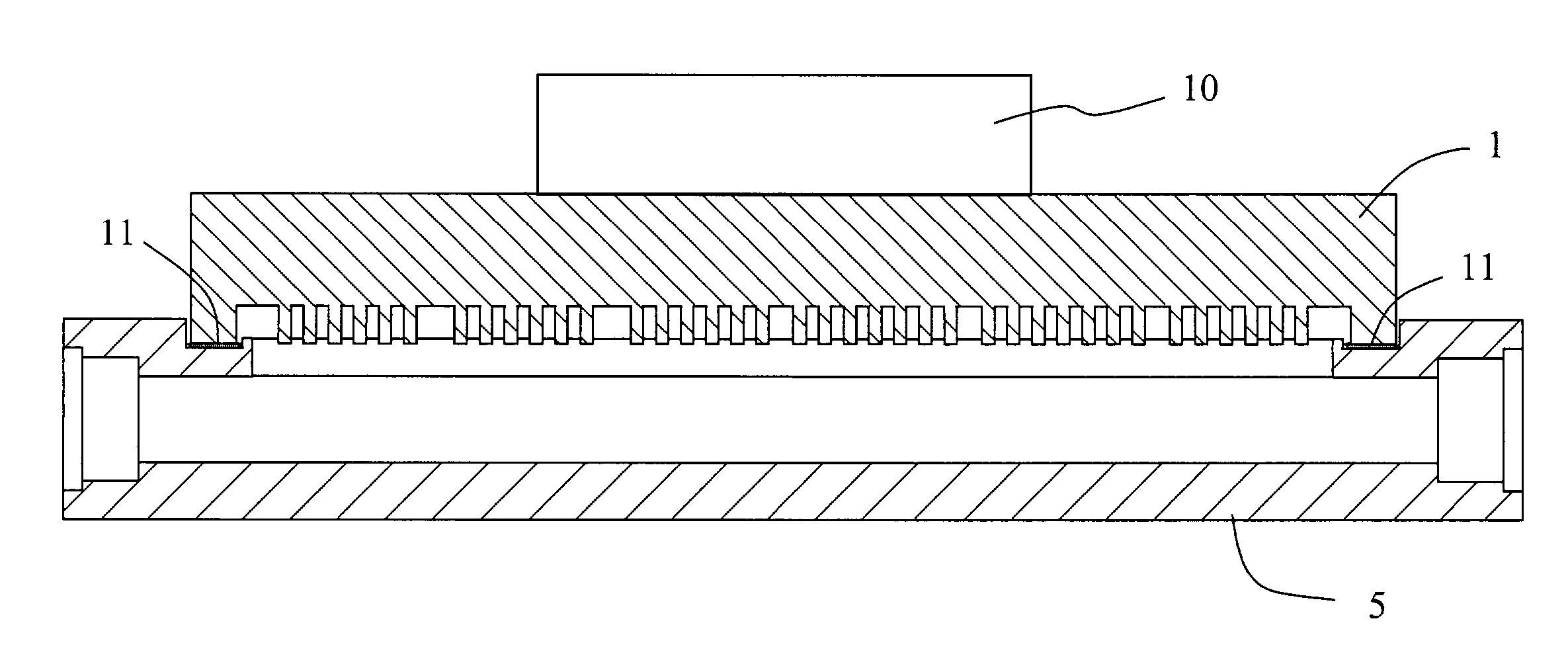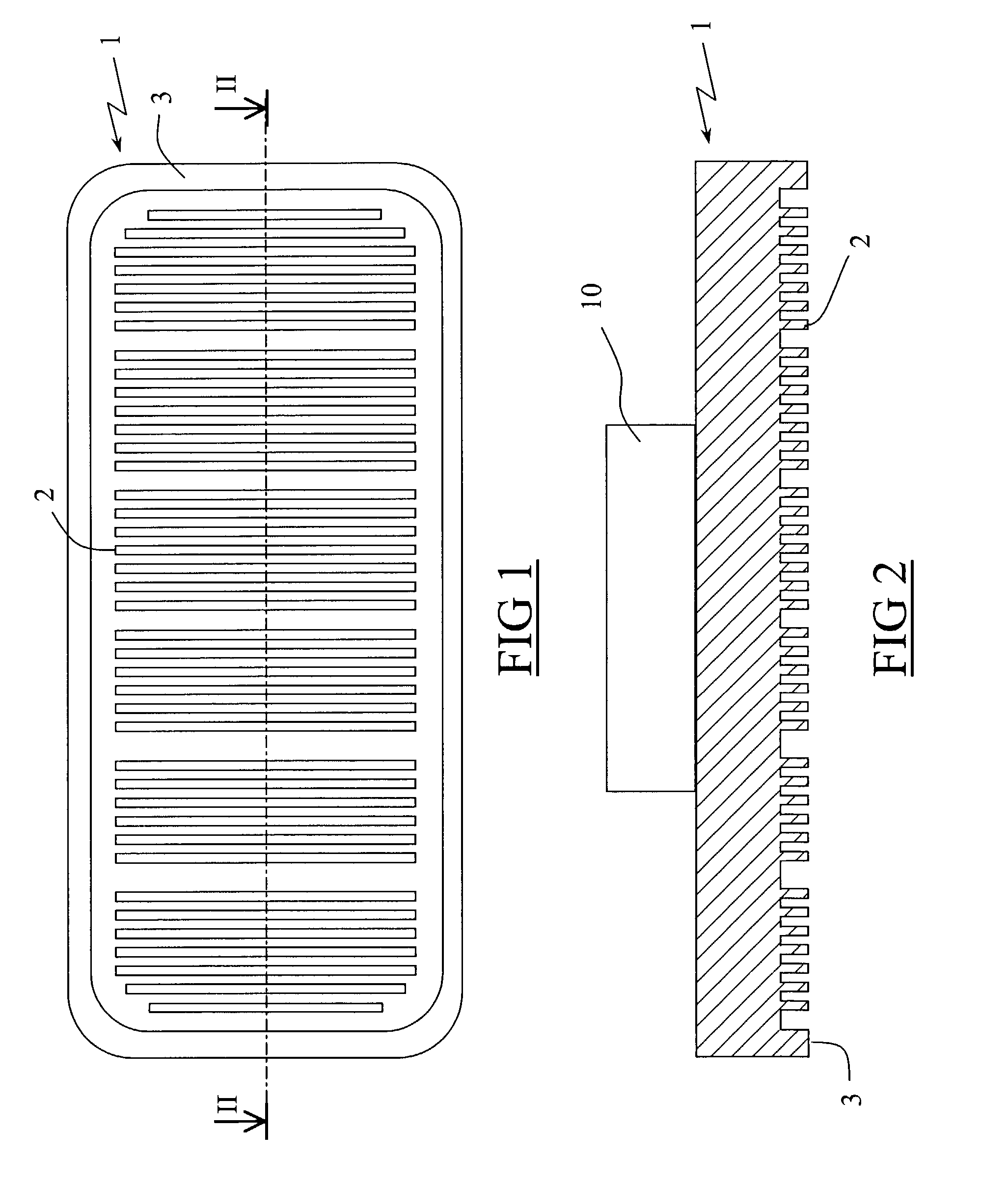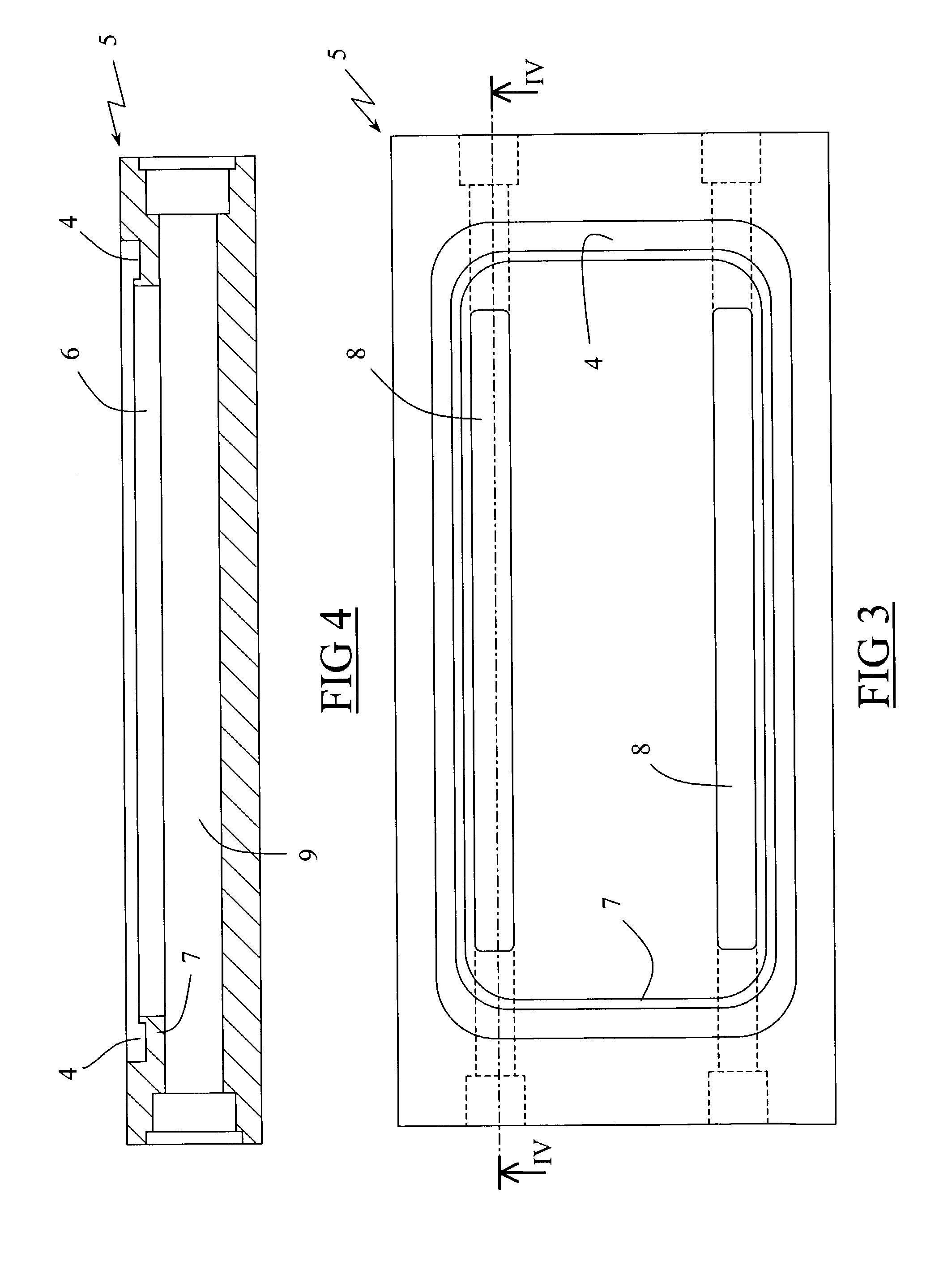Method of improving the properties of adhesion of a non-oxide ceramic substrate before gluing it
a non-oxide ceramic and substrate technology, applied in the direction of adhesive processes with surface pretreatment, nuclear engineering, railway components, etc., can solve the problems of time-consuming and complicated, weak glued ceramic/polymer bonding, and inability to reliably glued joints in hot and humid environments
- Summary
- Abstract
- Description
- Claims
- Application Information
AI Technical Summary
Problems solved by technology
Method used
Image
Examples
Embodiment Construction
[0025]To simplify the drawings, only components necessary to understanding the invention are shown. The same components carry the same reference numbers from one figure to another.
[0026]FIGS. 1 and 2 show an aluminum nitride (AlN) substrate 1 having a bottom face provided with cooling fins 2 and a plane top face receiving a power semiconductor component 10. As shown in these figures, the periphery of the bottom face of the substrate has a downwardly projecting rim 3 adapted to be glued to a polyetherimide water manifold 5 shown in FIGS. 3 and 4.
[0027]As shown in FIGS. 3 and 4, the water manifold 5 has in its top part an opening 6 bordered by a rim 7 with a groove 4 having a shape complementary to that of the rim 3 of the substrate 1. The bottom part of the opening 6 is closed by a wall with localized slots 8 opening into passages 9 which extend longitudinally inside the body of the manifold 5 and are fed with cooling water from their ends.
[0028]The method of improving the adhesion p...
PUM
| Property | Measurement | Unit |
|---|---|---|
| Nanoscale particle size | aaaaa | aaaaa |
| Nanoscale particle size | aaaaa | aaaaa |
| Adhesion strength | aaaaa | aaaaa |
Abstract
Description
Claims
Application Information
 Login to View More
Login to View More - R&D
- Intellectual Property
- Life Sciences
- Materials
- Tech Scout
- Unparalleled Data Quality
- Higher Quality Content
- 60% Fewer Hallucinations
Browse by: Latest US Patents, China's latest patents, Technical Efficacy Thesaurus, Application Domain, Technology Topic, Popular Technical Reports.
© 2025 PatSnap. All rights reserved.Legal|Privacy policy|Modern Slavery Act Transparency Statement|Sitemap|About US| Contact US: help@patsnap.com



